Q.D. Leavis, Edgar Rice Burroughs, and Fiction and the Reading Public
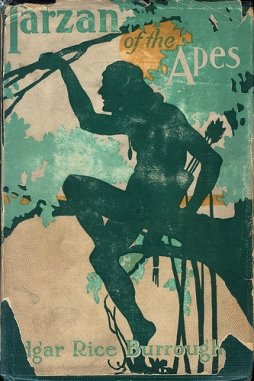 Before continuing the series of posts on Romanticism that I talked about last week, I’d like to write about a couple of subjects I’ve had on my mind for a while. First up is Q.D. Leavis, and her book Fiction and the Reading Public.
Before continuing the series of posts on Romanticism that I talked about last week, I’d like to write about a couple of subjects I’ve had on my mind for a while. First up is Q.D. Leavis, and her book Fiction and the Reading Public.
In or slightly before 1932, Edgar Rice Burroughs wrote a letter to literary ciritc Queenie Dorothy Leavis. Leavis was preparing her PhD thesis, a book that would be an overview of the development of the bestseller and the publishing industry; as part of her preparation, she sent a questionnaire to sixty writers of various kinds, asking them about various aspects of fiction and publishing. Burroughs returned his questionnaire with a letter, which Leavis reproduced at one point in her book:
In submitting to you, in accordance with your courteous letter, my answers to your questionnaire, I wish you to know that I am fully aware of the attitude of many scholars and self-imagined literati toward that particular brand of deathless literature of which I am guilty.
From past experience it is only natural that I should assume that you may, in some degree at least, share their views. It would seem rather remarkable to me if you did not.
However, you have asked my assistance and I have given considerable time and thought to my reply to your questionnaire, in which I have outlined my sincere beliefs after mature and serious considerations.
It is occasionally the practice of critics to treat my work with ridcule and contempt, neither of which it deserves. If it is your purpose to draw conclusions from the answers you receive to the questionnaires you have circulated, may I ask of you, in my case, a fair and considerate treatment of the subject and of me? I do not intend by this to convey the idea that I expect you either to agree with my views or praise my work, but I shall appreciate it if you will treat the former with such seriousness as my careful and conscientious reply to your request merits.
After Leavis reprints the letter, she observes that it’s true that the bestelling writer “is now commonly considered a figure of fun by those who cannot read his works with enthusiasm.” But, she goes on, the popular writer “is identical with his public in background of taste and intellectual environment; he is now in the closest touch with his readers … And when we consider that so many authors of the novels which have achieved canonisation in the text-books were popular writers earning their bread by the pen … it becomes obvious that no sharp dichotomy exists or can be made between the works of fiction which cultivated persons have in the past found admirable and those which amuse the uncluttered.”
 Until she reaches page 239 of her book, that is, when she uses an extract from Tarzan of the Apes as an example to illustrate the nature of a bestseller. The extract describes Jane Porter trying to choose between Tarzan and another man. “It exhibit[s] a crude, ill-furnished mind trying to interpret the workings of a personality stated but not shown to be cultivated and complex,” judges Leavis — “notice the pitiful attempt at analysis with a set of terms gleaned from some such superficial source as a newspaper and often misapplied … the author’s aim is merely to put across a plausible situation of the kind adapted to the screen.”
Until she reaches page 239 of her book, that is, when she uses an extract from Tarzan of the Apes as an example to illustrate the nature of a bestseller. The extract describes Jane Porter trying to choose between Tarzan and another man. “It exhibit[s] a crude, ill-furnished mind trying to interpret the workings of a personality stated but not shown to be cultivated and complex,” judges Leavis — “notice the pitiful attempt at analysis with a set of terms gleaned from some such superficial source as a newspaper and often misapplied … the author’s aim is merely to put across a plausible situation of the kind adapted to the screen.”
And, more intriguingly: “Apart from the obvious inadequacy of [Burroughs and of Philip Gibbs, author of The Street of Adventure] to handle the situations they have postulated there is this worth remarking: both are able to depend on stock responses which enable them by a few clumsy strokes to evoke a composite picture that is already stowed away in their readers’ minds … All this is betrayed by the consistent use of clichés (stock phrases to evoke stock responses) — nothing is freshly realised, and of general terms — nothing is concrete and immediate.”
This is intriguing to me because Leavis is, unintentionally, getting close to whatever it is that Tarzan has that leads it to still be read in 2011. I’d argue that this is some kind of archetypal or mythic power, which readers have responded to over time. Leavis was writing before such notions became prominent in literary criticism, though as far as I know she never particularly warmed to them. That’s unfortunate if only because it leaves no way of explaining why Tarzan’s lasted, given her assessment of the quality of the writing.
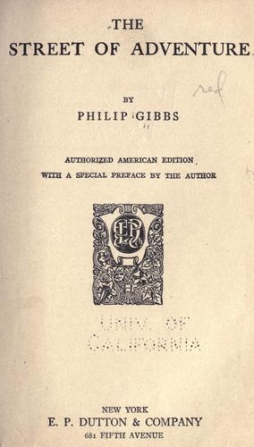 In general, Fiction and the Reading Public is like that: fascinating and frustrating. Leavis was on to a powerful idea, but was undermined I feel by her own prejudices about literature, and an inability to consistently apply her own methodology. But then, some of the book’s interest lies in those same prejudices, an unyielding elitism that can be bracing and inspiring about as often as it can seem mule-headed and blinkered.
In general, Fiction and the Reading Public is like that: fascinating and frustrating. Leavis was on to a powerful idea, but was undermined I feel by her own prejudices about literature, and an inability to consistently apply her own methodology. But then, some of the book’s interest lies in those same prejudices, an unyielding elitism that can be bracing and inspiring about as often as it can seem mule-headed and blinkered.
Q.D. Leavis, like her husband F.R. (Frank Raymond), was the sort of academic critic that still seem to haunt the imaginations of some genre fans. They both shunned anything that smacked of escapism, any writing that did not deal in “seriousness.” They saw a distinct division between popular art and true, high art, and much of the criticism both of them wrote reflects that belief. And they believed in the essentially moral nature of a work of art; that great art and writing had value for what it taught as well as what it was.
Q.D. Leavis was 26 when she published Fiction and the Reading Public. It’s an ambitious book, that suggested a new way to look at the development of fiction and publishing; I suspect Leavis herself perhaps did not fully realise all that was implicit in her approach. It’s an attempt to analyse the nature of the reading audience over time — what people read, and why. In her introduction she describes her approach as “anthropological,” which is as good a way as any of describing it. The book has three parts. In the first, she takes a close look at the fiction marketplace of 1930; in the second, she moves back over the history of the modern publishing industy — indeed, going back even before that industry developed, to the Elizabethan age — to present a history of how tastes in reading developed. Her third part attempts to draw some conclusions from the past and present of publishing.
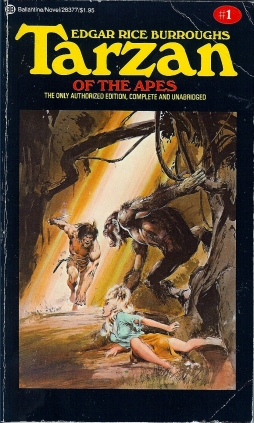 I found the first part fascinating, as it described a print marketplace radically different, but not necessarily better, than what we have today. Part 3 was also intriguing, mainly because I found myself thinking carefully about where precisely my points of disagreement were; it’s something worth arguing with. Part 2, the history, was simply unconvincing. I want to take a moment before going on to explain why, and why Parts 1 and 3 are still useful despite this failure.
I found the first part fascinating, as it described a print marketplace radically different, but not necessarily better, than what we have today. Part 3 was also intriguing, mainly because I found myself thinking carefully about where precisely my points of disagreement were; it’s something worth arguing with. Part 2, the history, was simply unconvincing. I want to take a moment before going on to explain why, and why Parts 1 and 3 are still useful despite this failure.
Generally, Leavis presents a myth of fallen literature. There was a point, she says, back in the Elizabethan era, when the English language was vigorous and powerful; readers enjoyed work by superlative writers, and (she argues) even if they appreciated the work on a low, undiscriminating level, the power of the language still reached them and improved them. Over time, though, as circulating libraries became more influential and the publishing industry developed, a mass audience began insisting on books which focussed on the the more superficial elements of fiction — on wish-fulfillment, essentially, on stories which confirmed the audience in their prejudices rather than challenged them. Her discussion of the development of popular culture and popular writing attempts to follow this process through to the present.
Basically, I think Leavis’ presentation of the history of popular taste is lacking because she does not do for previous eras what she does for her own. Whereas in Part 1 she carefully surveys all the different contemporary venues for fiction, and presented concrete sales figures to illustrate their reception, Part 2 lacks that broad view. All the familiar names of literary history are there, but Leavis needs much more than that for her admittedly brief survey to make her points convincing. In order to achieve what she wants, she needs to address the different venues available for writers, what the mechanisms of distribution were for fiction, the different genres of the different eras, and the critical theories that defined the values accorded to those genres — for starters. I suspect there was a dearth of scholarship for her to refer to, that the studies she needed to support her point had not in fact been done at that point. Instead, Leavis gives us a largely unsatisfactory, somewhat impressionistic and idealised look at the past of English literature.
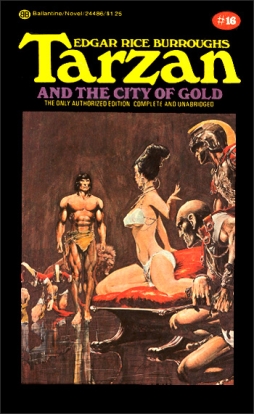 Ironically for someone who insists on the value of rigour, logic, and careful attention to a text — it’s no accident that the critical journal her husband founded, and to which she contributed, was named Scrutiny — her presentation of the past is highly romantic. For Leavis, the pre-industrial past was a society of contented, creative artisans, united in a common society — but who nevertheless accepted the critical opinions of their betters, specifically of “a select, cultured element of the community that set the standards of behaviour and judgment, in direct opposition to the common people.” The common people themselves are viewed as a “herd” whose tastes actively led to the degradation of literature; for Leavis the democratisation of reading and of literature was a degeneration of art.
Ironically for someone who insists on the value of rigour, logic, and careful attention to a text — it’s no accident that the critical journal her husband founded, and to which she contributed, was named Scrutiny — her presentation of the past is highly romantic. For Leavis, the pre-industrial past was a society of contented, creative artisans, united in a common society — but who nevertheless accepted the critical opinions of their betters, specifically of “a select, cultured element of the community that set the standards of behaviour and judgment, in direct opposition to the common people.” The common people themselves are viewed as a “herd” whose tastes actively led to the degradation of literature; for Leavis the democratisation of reading and of literature was a degeneration of art.
So much for Part 2 of the book. It is true, of course, that writing and literature changes with the times; with societal development and technological progress. Accordingly, her depiction of her own time now has a fascination it would not have had at the time of publication: she describes for us a vanished world. This first part of the book may therefore be the most interesting to contemporary readers.
Leavis begins by noting that “not only every one can read, but it is safe to add that every one does read.” She establishes this by looking at the statistics for newspaper sales and library use — 11 percent of the public were library users, with 75 to 80 percent of all books that circulated being fiction. But Leavis concludes that “the book-borrowing public has acquired the reading habit while somehow failing to exercise any critical intelligence about its reading … the reading habit is now often a form of the drug habit.” Note, though, that Leavis here is describing commercial circulating libraries, promoting the day’s pop fiction — she quotes publisher Stanley Unwin (who would go on to publish The Hobbit) as saying that libraries of this sort “tends to assist the circulation of indifferent and bad books, and retard the circulation of really good books.”
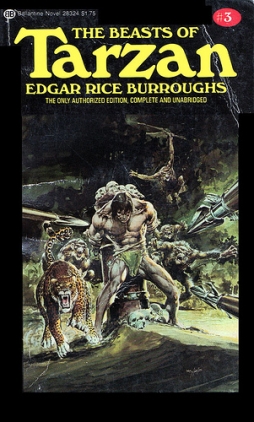 The statistics Leavis presents are fascinating. She cites a calculation that 200,000,000 words of new fiction are published each month (presumably in the English-speaking world). There were 900 magazines publishing fiction. Accepting the divisions of lowbrow, middlebrow, and highbrow, she recorded that “typical lowbrow literary organs [review magazines] sell 30,000, 50,000, and in one case 100,000 copies of each number,” where middlebrow magazines would sell about 10,000 copies and highbrow literary magazines about 4000 — again, so far as I can tell, that’s in England alone. Poetry, though, did not sell, and “publishers are unwilling to issue volumes of short stories (which for some reason are said not to pay).” It was novels that people wanted.
The statistics Leavis presents are fascinating. She cites a calculation that 200,000,000 words of new fiction are published each month (presumably in the English-speaking world). There were 900 magazines publishing fiction. Accepting the divisions of lowbrow, middlebrow, and highbrow, she recorded that “typical lowbrow literary organs [review magazines] sell 30,000, 50,000, and in one case 100,000 copies of each number,” where middlebrow magazines would sell about 10,000 copies and highbrow literary magazines about 4000 — again, so far as I can tell, that’s in England alone. Poetry, though, did not sell, and “publishers are unwilling to issue volumes of short stories (which for some reason are said not to pay).” It was novels that people wanted.
As a result, novels were highly commercial. Much of the best material in Fiction and the Reading Public is a critical analysis of what the emphasis on the commercial narrative was doing to fiction. You can recognise, I think, many of the same habits of thought as one finds in the current marketplace. Sometimes those are amplified, or less self-conscious than they might be today. Consider a piece Leavis quotes from a literary agency called the Anglo-American Manuscript Service, which tried to advise English writers on how to place stories in American magazines (all italics in the original):
If you want to be a successful writer for American publications, for which high prices are paid for really first-class matter, bear in mind that American fiction, in the main, is not pessimistic, nor is it lewd or irreverent, neither is it red nor un-American.
Avoid morbidity. The Americans don’t want gloom, but something that will brighten life. The sun must always be shining. Treat sex reverently, and avoid its unsavoury aspects. Don’t be vulgar. Remember that serious thought is not looked for in the majority of American magazines. Don’t discuss religious questions in a manner that would offend national sentiment, and leave evolution out of your writings. Religion that brings out its boons and blessings to long-suffering humanity is deemed praiseworthy. Leave social and political problems to take care of themselves. Remember that America is a young and prosperous country, and there is nothing on God’s earth to equal it.
We want to market your manuscript. Help us to do so.
Leavis’ point (and she argues that the same conditions held for the English market, except the clause about evolution) is that this commercialisation of fiction leaves out much that is potentially of great worth. Since these values dominate the marketplace, she believes that the writer who has something individual to say about “social and political problems” or the like, will be unable to get published. It’s difficult to judge how true this was in 1932; nowadays I suppose we’d simply say that different magazines are aimed at different audiences, or else are intended for different purposes. Leavis didn’t, believing that the best fiction deserved the widest audience possible; and if that seems odd and idealistic now, it is still admirable.
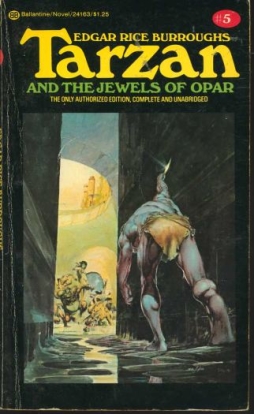 In any event, there’s no doubt that some of her analyses are still worth remembering today. For example, Leavis notes that magazines depend on their advertisers, and that therefore the type of journalism and fiction that sees print follows from the advertisers’ desire for a happy, contented audience. So far as I can tell, for the time that was an unusual and perceptive observation. I’d say in general that Leavis is generally at her best in analysing how popular fiction plays to readers’ prejudices and props up social convention.
In any event, there’s no doubt that some of her analyses are still worth remembering today. For example, Leavis notes that magazines depend on their advertisers, and that therefore the type of journalism and fiction that sees print follows from the advertisers’ desire for a happy, contented audience. So far as I can tell, for the time that was an unusual and perceptive observation. I’d say in general that Leavis is generally at her best in analysing how popular fiction plays to readers’ prejudices and props up social convention.
As she puts it:
The modern magazine, then, while being very much more ‘readable’ for the exhausted city worker than it ever was, has achieved this end by sacrificing any pretension to be literature; nor does it merely set itself to amuse and soothe. It is quite explicitly defiant of other standards and ambitions. And by accustoming the reading public to certain limited appeals and a certain restricted outlook, it has spoilt the public for fiction in book form of a more serious nature.
Leavis despised what she saw as the public’s desire to read fiction based on their interest in the story rather than the writing — to choose whether or not to read Conrad, for example, based on how one feels about sea stories. This, I feel, is where it becomes difficult to agree with her; surely one has the right to read what one wishes, for the reasons one wishes. She identifies four main reasons why people read novels:
1. To pass the time not unpleasantly.
2. To obtain vicarious satisfaction or compensation for life.
3. To obtain assistance in the business of living.
4. To enrich the quality of living by extending, deepening, refining, co-ordinating experience.
For Leavis, only the last of these reasons is really valid. One should read in order to come to a better understanding of life. Reading, for her, seems to have been a largely conscious endeavour, in the sense that one read for a purpose, and the worthiness of the purpose and of the works read were bound up together.
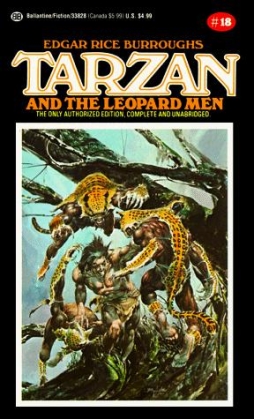 You might well argue that this attitude is wrong; at least, I would. For what it’s worth, it seems to me that reading fulfills some largely unconscious drive, in which escapism and fantasising are elements, and in which the desire to improve one’s understanding is likely another element, but which as a whole remains ultimately unknowable. Great writers are those which are better able to intuit this end, and reach it without being able to define it — because that end which can be defined is not the end of fiction. But for Leavis this approach would doubtless be too vague.
You might well argue that this attitude is wrong; at least, I would. For what it’s worth, it seems to me that reading fulfills some largely unconscious drive, in which escapism and fantasising are elements, and in which the desire to improve one’s understanding is likely another element, but which as a whole remains ultimately unknowable. Great writers are those which are better able to intuit this end, and reach it without being able to define it — because that end which can be defined is not the end of fiction. But for Leavis this approach would doubtless be too vague.
The word “escapism” was being coined at about the time she was writing Fiction and the Reading Public; although the word doesn’t appear in the book, in a sense it is perhaps best understood as a jeremiad against escapism. Leavis thought that the need for what we would now call escapism derives from the conditions of modern life — the nine-to-five grind, the need for “mental relaxation.” This I think ties in with her idealisation of the past, and her suspicion of “the herd.” Popular art and its effects were to be guarded against.
It is a kind of Puritan approach to reading (culturally, not religiously. Leavis herself was Jewish; her family disowned her for marrying outside the faith). She wrote that:
The effect of an inordinate addiction to light reading was known (mainly by repute) to the nineteenth century; it came under the head of ‘dissipation,’ and to read novels, as to drink wine, in the morning was far into the century a sign of vice, while to devote a fixed time to solid reading was a matter of conscience. So a self-denying age guarded its sobriety, but there is no such restriction even now among the professionally cultured.
So for Leavis there’s something threatening in light reading. “A habit of fantasying will lead to maladjustment,” she tells us. For Leavis, day-dreaming is shameful; it’s self-indulgence. When someone describes a certain tale as “a story that grips the imagination,” Leavis observes parenthetically that “this kind of response means that the reader skips nearly everything but the dialogue.”
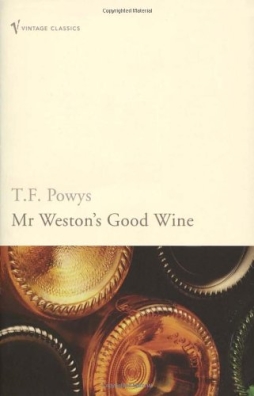 This is where I think Leavis is about as objectively wrong as it’s possible to be in discussions of this sort. She discounts entirely the value of the imagination; the value of fiction as a spur to the imagination. She has no use for myth. ‘Fantasy’ is a bad word. It seems to me that she is exactly wrong here: that one of the real virtues of writing, of great writing, is the way it acts on the imagination. In the way it raises us up to the imaginative level of the writer — or, conversely, the way it opens us up to the mythic richness of their material.
This is where I think Leavis is about as objectively wrong as it’s possible to be in discussions of this sort. She discounts entirely the value of the imagination; the value of fiction as a spur to the imagination. She has no use for myth. ‘Fantasy’ is a bad word. It seems to me that she is exactly wrong here: that one of the real virtues of writing, of great writing, is the way it acts on the imagination. In the way it raises us up to the imaginative level of the writer — or, conversely, the way it opens us up to the mythic richness of their material.
What is interesting, though, is that Leavis does not define ‘fantasy’ as we would today, as a genre of fiction; she means only something like ‘wish-fulfillment.’ It’s notable, in fact, that other than a few dismissive mentions of “the detective-story,” she doesn’t refer to genres as such. Nothing about the weird tale, or the western, or science fiction — or scientific romance or scientifiction. In fact, at least one of the books she specifically holds up as an example of the highest literary art, T.F. Powys’ Mr Weston’s Good Wine, is a kind of religious fantasy (and for the record I like it a lot, but wouldn’t have ranked it with Joyce and Woolf; it’s a sort of Chestertonian fable, but more powerful, bleaker, and sexually knowing than Chesterton).
Leavis’ fear of readers seeking escapism, of “the herd” and their lack of discernment, is perhaps the least sophisticated part of the book and of her general critical ideology. But something important remains to be said, and that is this: Leavis is not entirely wrong. Other than Tarzan of the Apes, none of the bestsellers she mentions can be said to still be read in any quantity. It’s difficult to discern true mythic power; difficult to predict what will last and what won’t. If her fear of escapism seems misplaced now, it is still a valid warning that the desire for escape alone does not make for great or lasting writing.
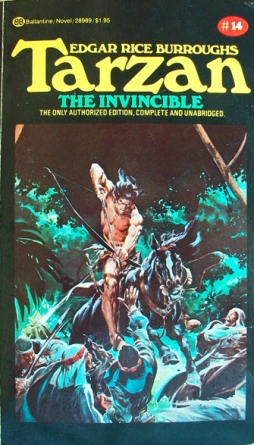 I think Leavis was often wrong in interesting ways, and ways worth thinking about. I think her overall project was fascinating, for all my qualms with her approach to history. I think the portrait of the industry in 1930’s is interesting, and I think also that the absolute insistence on high art, and the suspicion of the marketplace, is frankly bracing. Things taken for granted now were new then; the advent of movie novelisations, the importance of book clubs, bestesellers crowding the highbrow and the midlist out of publishers’ offerings. Reading Leavis scrutinsing these things is surprisingly powerful; she seems at once naïve and radical. The assumption that the writer must write to a marketplace, rather than expressing some keenly-felt truth or interrogating language on their own terms, is common today; to Leavis it was abhorrent, a sign of the degradation of art. In that, I think I by-and-large agree with her.
I think Leavis was often wrong in interesting ways, and ways worth thinking about. I think her overall project was fascinating, for all my qualms with her approach to history. I think the portrait of the industry in 1930’s is interesting, and I think also that the absolute insistence on high art, and the suspicion of the marketplace, is frankly bracing. Things taken for granted now were new then; the advent of movie novelisations, the importance of book clubs, bestesellers crowding the highbrow and the midlist out of publishers’ offerings. Reading Leavis scrutinsing these things is surprisingly powerful; she seems at once naïve and radical. The assumption that the writer must write to a marketplace, rather than expressing some keenly-felt truth or interrogating language on their own terms, is common today; to Leavis it was abhorrent, a sign of the degradation of art. In that, I think I by-and-large agree with her.
The book represents an unapologetic elitist trying to describe the state of popular fiction in her time, and how it got to be that way. I’d love to see somebody who knows something about the modern publishing industry take an in-depth look at it, and grapple with some of the issues she raises. But I think most readers, whatever their background, would find it a fascinating exercise to think critically about where Leavis seems to be right, where wrong, and why.
Matthew David Surridge is the author of “The Word of Azrael,” from Black Gate 14. His new ongoing web serial is The Fell Gard Codices. You can find him on facebook, or follow his Twitter account, Fell_Gard.
REALLY fascinating! Thanks again, Matthew! What a brilliant brain you have.
Another fascinating, well written essay. it was a joy to read. There’s a couple of things at the beginning, though, that I’m not sure about. Not that they invalidate your premise, but they may muddle it a bit.
You say that Leavis faults Burroughs for using stock cliches that generate stock responses, and then propose that this points to Burroughs using archetypes that gave his work long lasting power. I think you and Leavis are talking about two different things. She’s talking about terrible dialog, unrealistic scenarios and cardboard characters with no inner life – the surface of the book. You are talking about the tropes of heroism, noble savagery, and classic adventure plotting, that are the bones beneath the things she despised, and which she doubtless didn’t see.
Tarzan is not a long running character because of Burroughs’ prose. As much as I love his books (particularly the John Carter series) his style is everything Leavis says it is – crude, cliched and superficial. It is his ideas that have power, and they are so strong that despite his clumsy way of expressing them, they still resonate today. I would argue that, had Tarzan not been made into movies in the 30s, it and ERB would have vanished from popular consciousness like so many other popular writers of his day. The movies were able to take the things that were powerful about the Tarzan premise and make them more powerful by hiding the less than perfect prose and making them visual icons. People know Tarzan from the movies and comics and TV shows that sprang from ERB’s books, but I doubt the books themselves are read hardly at all now.
So, what I’m saying is, you’re right. ERB tapped into the ancient archetypes and was able to make lasting, iconic characters with them, but this has nothing to do with his ability to write a compelling scene or character – which is what Leavis was criticizing him for.
Makes me wonder what she would have made of REH, who actually could write compelling scenes and characters.
A very intriguing article. I was particularly interested in her idea of a “fallen literature.” The idea that Literature was somehow better before the Industrial Revolution seems to have been popular before World War II. I have to admit there’s a charm, for the academic at least, to the mental image of Byron sitting at some Baroque desk, composing an elaborate and intricate stanza, steering English language to new and dizzying heights.
That seems to be the sort of reading for the sake of writing that Leavis is advocating. I often wonder if that type of thinking isn’t just elitist, isn’t it also somewhat classist? Isn’t the logical extreme of such an argument that the uneducated (the poor) shouldn’t be allowed to choose what they read because they are unqualified? At the time of her writing only about ten percent of people went on to attend college. That’s a very small segment of the population determining what the public at large should read.
While I do enjoy writing that is original and unique, so much so that it employs all my mental faculties, I emphatically do not want to live on a steady diet of that. It would be like eating foie gras for breakfast, lunch, and dinner. The steak and potatoes of REH, and Count Chocula of Lovecraft are much easier on the digestion.
As an aside, I think that the somewhat odd use of Powys as an example has something to do with his being related to William Cowper. Since it seems she’s advocating Romantic ideals, it would make sense. But I’m no critic, what do I know.
Claire: Thanks!
Nathan: You’re right, the quality of Burroughs’ prose and his ability to tap into archetypes are two different things. I suppose what I’m getting at was that Leavis didn’t seem at all interested in making the distinction, or in investigating whether there’s any kind of link. I think that for Burroughs, given the kind of story he was telling and the sort of approach he was taking, the two things are actually somewhat connected.
There’s a passage in C.S. Lewis’ Preface to Paradise Lost (which I don’t have around me at the moment, so I’m going from memory here) where he talks about people criticising Milton’s image of Eden because there’s nothing surprising in it. For Lewis, that was a sign of Milton’s greatness — that he was using just the images one would expect to find in an Eden; what could be called either stock images or archetypes. What I see in the Leavis/Burroughs thing is something similar — I think the way Burroughs expressed his myth was through clumsiness, if you see what I mean.
I thought for a while about whether it’d be fair to say that Tarzan survived only due to the movies. In the end I decided against it; John Carter still has some currency despite never having had a big movie made about him, so probably the same would have happened with Tarzan. There is a chicken-and-the-egg issue here; why would they make a movie about him unless he was already popular? At any rate, if there’s one thing Leavis’ book got across, it’s that print media was much, much bigger a hundred years ago than it is today — which I knew, but it’s a useful reminder of the scale. So it might be that Tarzan’s success in print was enough.
darangrissom: Thanks! Yeah, I think Leavis was fairly definitely classist. She did look back favourably to poor men who made something of themselves (in the 18th and 19th century specifically) and who cited great literature as an element in the lives they made. Other than that …
I will say that Leavis wasn’t explicitly advocating Romanticism in any form; my apologies if I created that impression. What I mean was that she was arguing explicitly for intense critical thought, but that her own unexamined assumptions involved a specific sort of romantic nostalgia for a vanished past. Leavis had no time for Shelley — but did like Byron, though for his more sardonic verse.